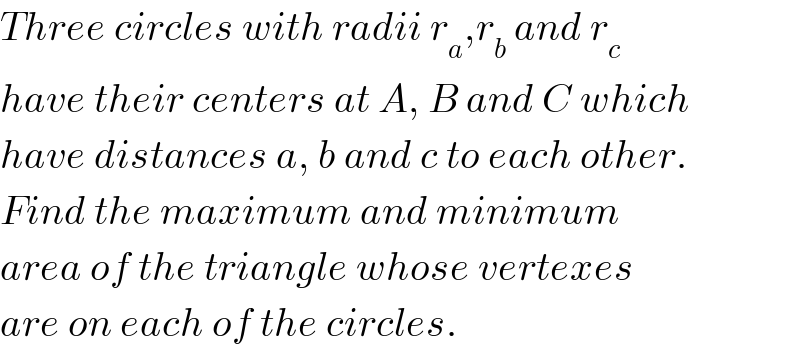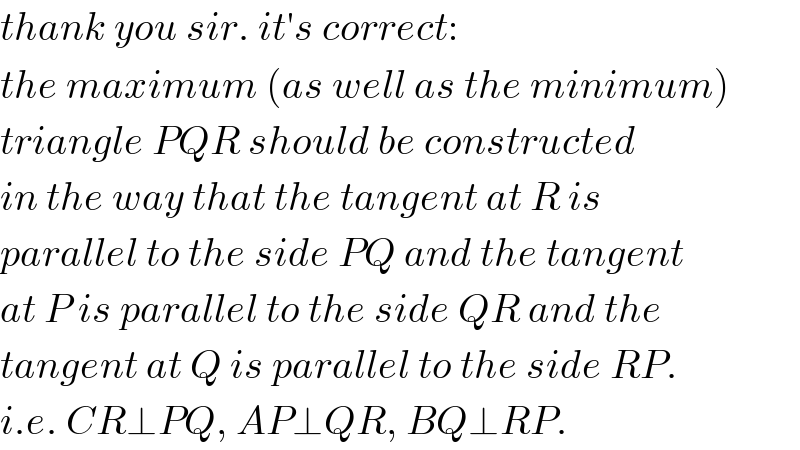
Question and Answers Forum
Question Number 52261 by mr W last updated on 05/Jan/19

Commented by mr W last updated on 05/Jan/19

Commented by behi83417@gmail.com last updated on 05/Jan/19

Commented by mr W last updated on 06/Jan/19

Commented by ajfour last updated on 05/Jan/19

Commented by ajfour last updated on 05/Jan/19

Commented by mr W last updated on 06/Jan/19

Commented by ajfour last updated on 06/Jan/19

Commented by ajfour last updated on 06/Jan/19

Commented by mr W last updated on 06/Jan/19

